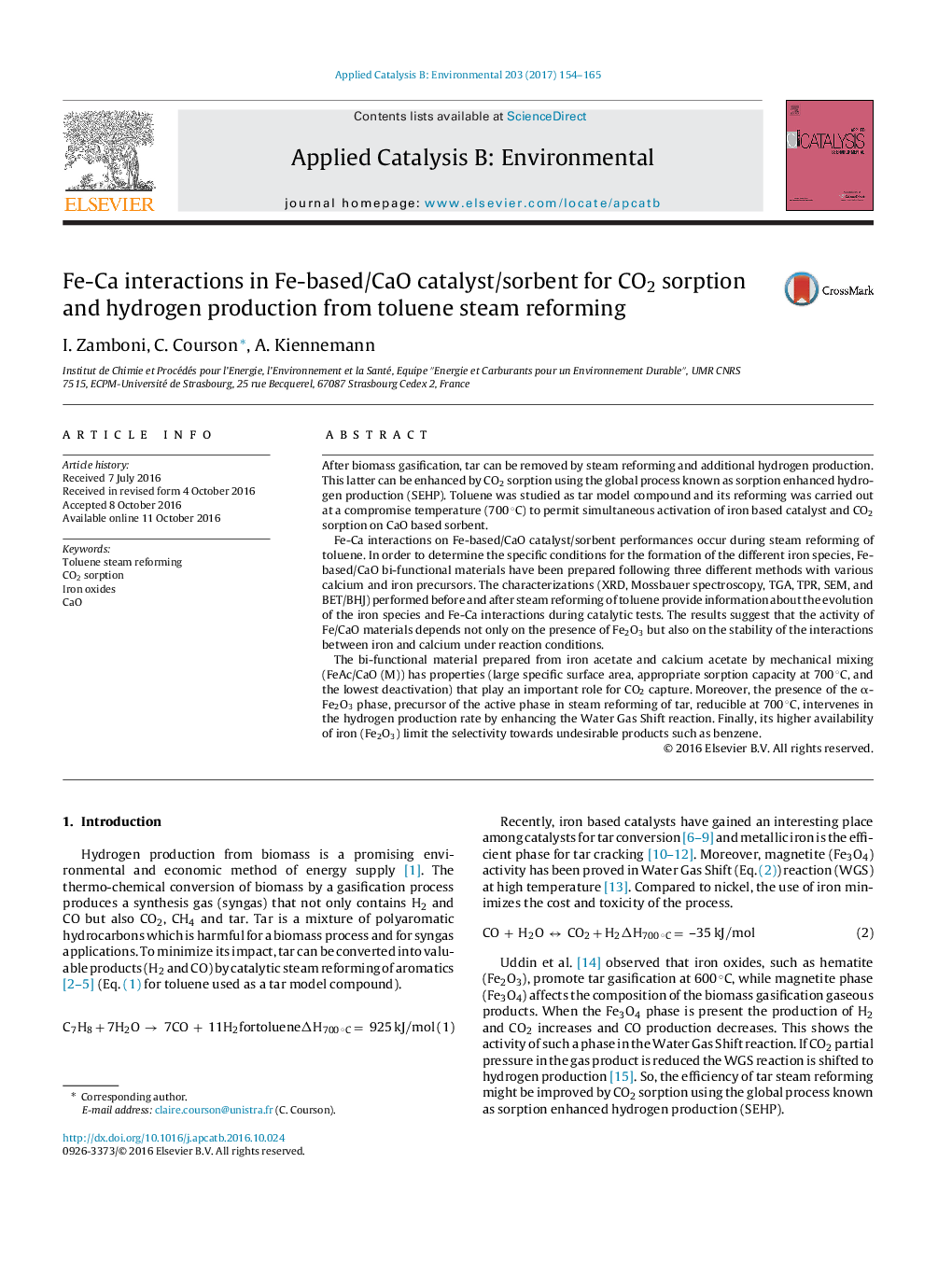| Article ID | Journal | Published Year | Pages | File Type |
|---|---|---|---|---|
| 6454432 | Applied Catalysis B: Environmental | 2017 | 12 Pages |
â¢Fe-based/CaO prepared by three different methods with various Ca and Fe precursors.â¢Fe-Ca interactions in Fe-based/CaO during toluene steam reforming at 700 °C.â¢Characterization before and after toluene steam reforming for evolution information.â¢Fe-based/CaO activity depends on Fe2O3 presence and on Fe-Ca interactions stability.â¢FeAc/CaO (M) best material for CO2 capture and α-Fe2O3 phase reducibility at 700 °C.
After biomass gasification, tar can be removed by steam reforming and additional hydrogen production. This latter can be enhanced by CO2 sorption using the global process known as sorption enhanced hydrogen production (SEHP). Toluene was studied as tar model compound and its reforming was carried out at a compromise temperature (700 °C) to permit simultaneous activation of iron based catalyst and CO2 sorption on CaO based sorbent.Fe-Ca interactions on Fe-based/CaO catalyst/sorbent performances occur during steam reforming of toluene. In order to determine the specific conditions for the formation of the different iron species, Fe-based/CaO bi-functional materials have been prepared following three different methods with various calcium and iron precursors. The characterizations (XRD, Mossbauer spectroscopy, TGA, TPR, SEM, and BET/BHJ) performed before and after steam reforming of toluene provide information about the evolution of the iron species and Fe-Ca interactions during catalytic tests. The results suggest that the activity of Fe/CaO materials depends not only on the presence of Fe2O3 but also on the stability of the interactions between iron and calcium under reaction conditions.The bi-functional material prepared from iron acetate and calcium acetate by mechanical mixing (FeAc/CaO (M)) has properties (large specific surface area, appropriate sorption capacity at 700 °C, and the lowest deactivation) that play an important role for CO2 capture. Moreover, the presence of the α-Fe2O3 phase, precursor of the active phase in steam reforming of tar, reducible at 700 °C, intervenes in the hydrogen production rate by enhancing the Water Gas Shift reaction. Finally, its higher availability of iron (Fe2O3) limit the selectivity towards undesirable products such as benzene.
Graphical abstractDownload high-res image (154KB)Download full-size image
